The Wood Neuk
Our Origins
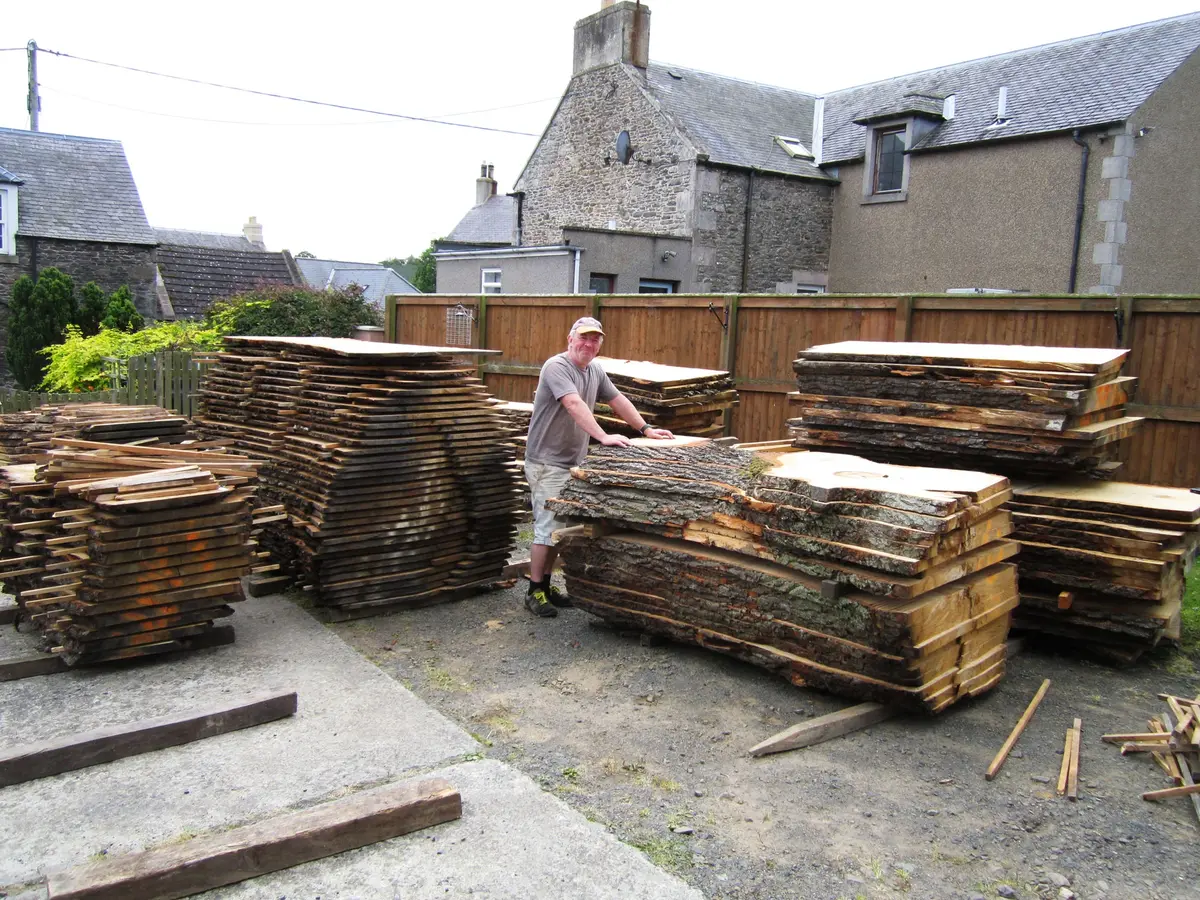
Traditional Air Dried Timber
Timber Preparation
When we produce a piece of furniture we take great care to be involved at each stage. From start to finish the process takes years.
At The Wood Neuk we source and dry our own timber. The trees we use come from all across Scotland. From the forests of Speyside to the local borderland, we only purchase trees which have been felled for a good reason, of perhaps been blown over . Being active members of our local community woodlands, we are forever conscious of this. We ensure that the butts (the trunks of the trees) we have chosen are cut into boards at an optimum angle and thickness that will maximise the visual effect of the grain within, any splitting, bark pockets or naturally undulating edges.
A recently felled tree has a moisture content of approximately 30%, too high for interior furniture. So after cutting, the boards are pinned, stacked and left outside to dry for roughly two years. After this period, the wood is ready for our kiln. The wood is kept in this dry heated atmosphere for about six weeks, or until the moisture content is at 12%-only then is the wood ready to be prepared.
Our Craft
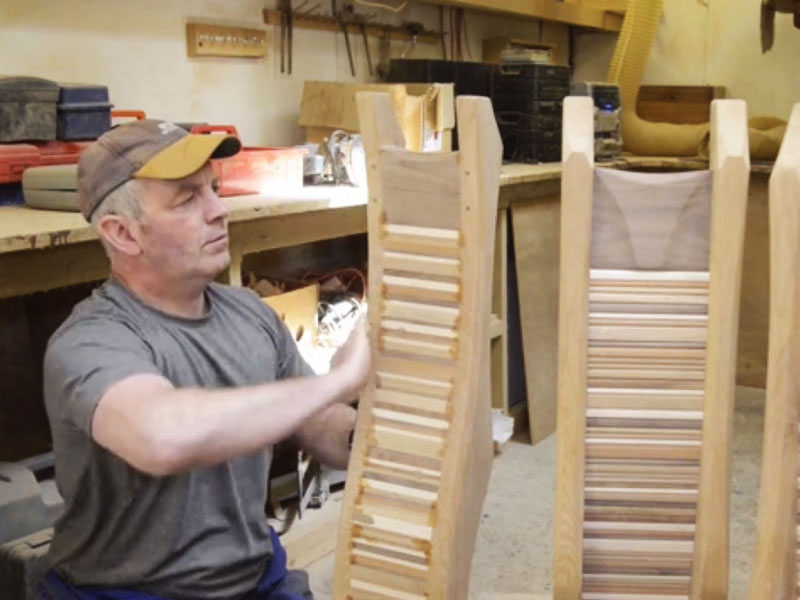
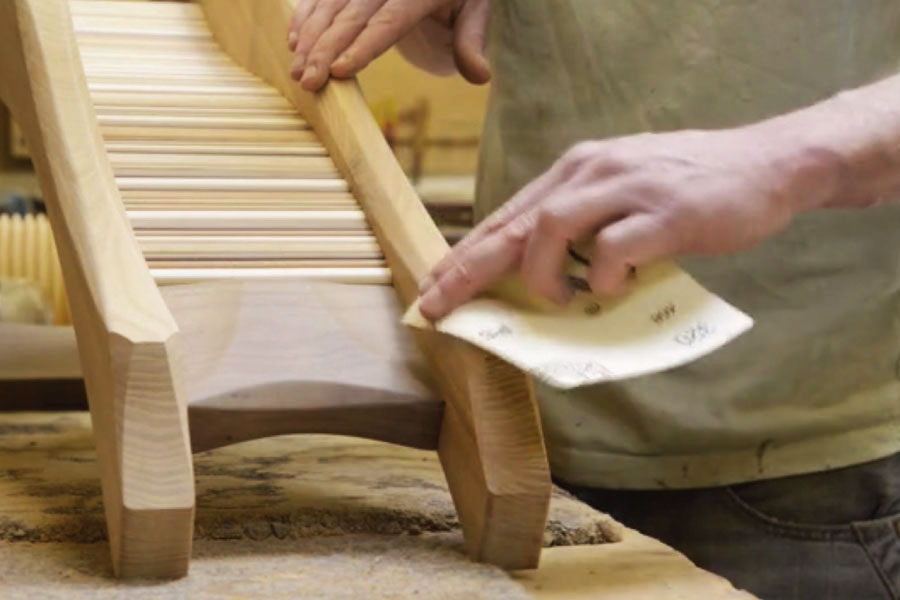
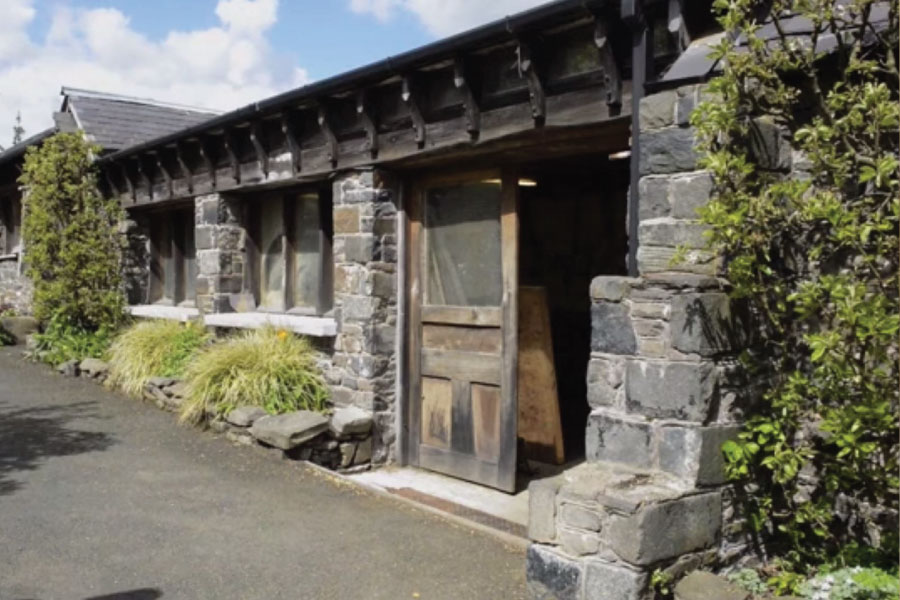
Our kiln dried wood is then cut according to the pieces we are producing. Any joints are crafted using traditional tools and the main carcass is roughly assembled. Next we shape each individual part, a skill developed over many years that gives our furniture its irregular but flowing lines. Each component is then carefully sanded using a variety of machines, before a hand sand produces the smooth satin-like finish which is synonymous with our furniture. At last the parts are assembled and the piece is almost finished.
Finish
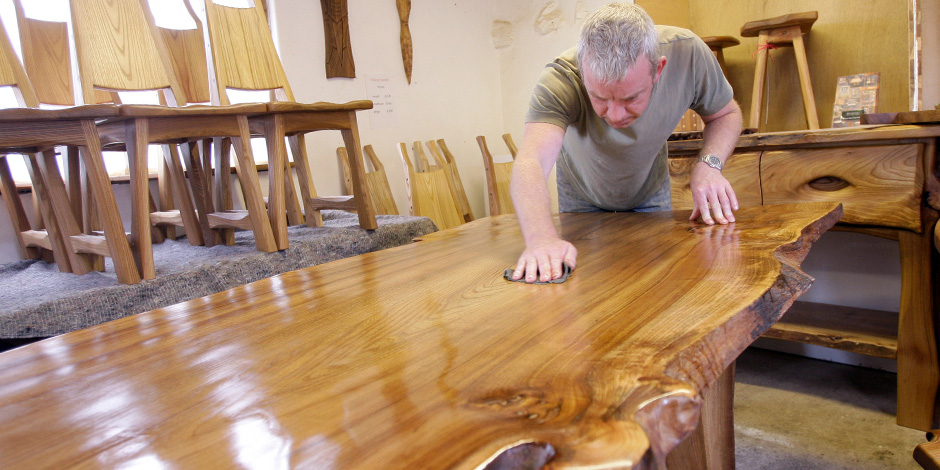
Boiled linseed oil is applied by hand to finish each piece of furniture. This simple product of nature provides a durable surface after a few coats and is also sympathetic towards the wood in that it intensifies the colours, details and patterns of the grain which are bound within. The easiness of this oil finish means that customers are able to take a bottle home with them and apply additional coats over the years – a truly rewarding experience – which ensures that with a little care, their piece of furniture will last many generations.

